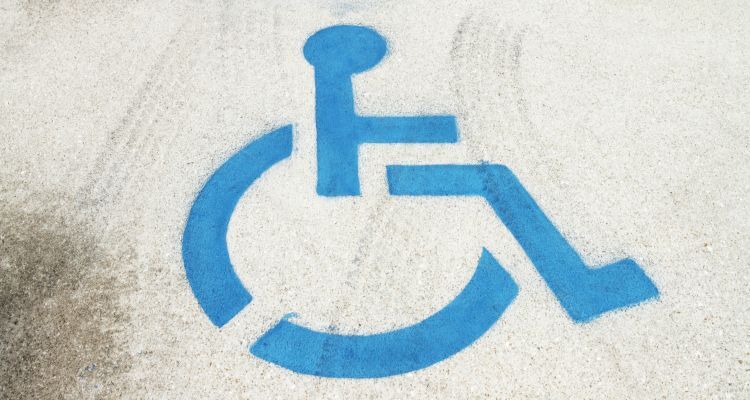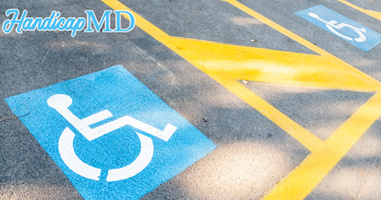
Myths vs. Facts: Debunking Common Misconceptions About Handicap Placards in Minnesota
Disability tags play a crucial role in ensuring that individuals with mobility impairments have access to designated accessible parking spaces. These parking spaces, which are typically located closer to entrances and designed to accommodate assistive devices like wheelchairs and walkers, are essential for people with disabilities to navigate public areas with greater ease and independence.
Despite the important role that disability tags play, there are many misconceptions and myths surrounding their use, eligibility, and enforcement in MN. These misunderstandings can lead to confusion, misuse, and even frustration for those who rely on disability parking privileges as well as for the public. In this article, we will explore the most common myths about handicap placards and parking in Minnesota and provide the facts to help clear up these misconceptions.
We will also address frequently asked questions (FAQs) about disability tags in MN , providing helpful information to ensure you understand the correct way to use these tags and the laws governing them.
What Is a Handicap Placard in Minnesota?
Definition and Purpose
A disability tag (or placard) in MN is a parking permit issued by the state's Department of Public Safety (DPS) to individuals with qualifying disabilities. The purpose of a disability tag is to allow the holder to park in designated accessible parking spaces, which are often located near building entrances, ramps, and elevators. These parking spaces are designed to make it easier for individuals with mobility impairments or other qualifying conditions to access public spaces and services.
Disability tags must be displayed in the vehicle when parking in a designated accessible parking space to avoid fines or penalties. These tags are issued to individuals based on medical certification, and their use is strictly regulated to prevent misuse and ensure that accessible parking spaces remain available for those who truly need them.
Types of Disability Tags Available in Minnesota
In MN, there are two primary types of handicap permits:
Permanent Disability Tag: Issued to individuals with long-term or permanent disabilities. These tags are valid for up to six years and must be renewed before they expire.
Temporary Disability Tag: For individuals with temporary disabilities, such as those recovering from surgery or an injury. Temporary tags are valid for up to six months and can be renewed if necessary, with updated medical certification.
In addition to tags, MN also offers disability license plates for individuals with permanent disabilities who own or lease their vehicles. These plates offer the same parking privileges as tags but are permanently affixed to the vehicle.
Application Process for a Handicap Placard in Minnesota
Obtaining a Minnesota handicap placard is a straightforward process, though it does require medical certification to ensure that only those with legitimate mobility impairments receive these disabled parking privileges. Below is a step-by-step guide to help you navigate the application process.
1. Determine Eligibility
Before applying, it’s essential to determine if you meet the state’s eligibility criteria. You may qualify if you have difficulty walking more than 200 feet without stopping, require mobility aids, or have a medical condition that impairs your ability to walk. Conditions such as heart disease, lung disease, and certain neurological disorders may also qualify.
2. Complete the Application
The application for a disability tag in MN is available through the Department of Public Safety's Driver and Vehicle Services (DVS) division. You can download the form from the official website, or you can visit a local DVS office to pick up a paper copy.
3. Obtain Medical Certification
Have a licensed HandicapMD healthcare provider complete a section of the application to verify that you meet the medical criteria. This is a crucial step, as the healthcare provider’s certification is necessary to prove that you have a qualifying condition.
4. Submit Your Application
Once the application and medical certification are complete, you can submit the form in person at any DVS office or mail it to the address provided on the form. If you’re applying for disability license plates, you may need to submit your vehicle’s registration information as well.
5. Receive Your Disability Tag
After your application is processed and approved, you’ll receive either a disability tag or disability license plates, depending on which you applied for. Temporary tags are valid for up to six months, while permanent tags are valid for four years.
HandicapMD.com: Simplifying the Application Process
For individuals who prefer a more convenient approach to obtaining their disability tag, HandicapMD.com offers an online service to streamline the process. HandicapMD.com connects you with licensed healthcare providers who can evaluate your condition and provide the necessary medical certification for your disability tag. This service is especially useful for individuals who have difficulty visiting a healthcare provider in person or who want to avoid long wait times.
By using HandicapMD.com, you can complete the entire process from the comfort of your home. Once your evaluation is complete, you’ll receive the medical certification needed to apply for your disability tag, saving you time and hassle.
Common Myths About Handicap Placards in Minnesota
There are several myths and misconceptions surrounding handicap placards in MN. Let’s take a closer look at some of the most common myths and reveal the facts behind them.
Myth 1: Disability Tags Are Only for People Who Use Wheelchairs
Fact: Disability tags are available to individuals with a wide range of mobility impairments.
One of the most widespread misconceptions about disability tags is that only individuals who use wheelchairs qualify for them. While wheelchair users certainly qualify for a disability tag, the eligibility criteria encompass a broader range of conditions. In MN, you are eligible for a disability tag if you have any condition that significantly impairs your mobility, including but not limited to:
- Use of a cane, crutches, or walker
- Severe arthritis or joint conditions
- Lung or heart conditions that limit physical activity
- Neurological impairments affecting mobility
Wheelchairs are not the sole determining factor for disability tag eligibility. If a person has difficulty walking 200 feet without stopping or needs assistance to move, they may qualify for a disability tag. The key requirement is that the condition must limit a person’s ability to walk short distances or require the use of mobility aids.
Myth 2: Disability Tags Are Permanent Once Issued
Fact: Some disability tags are temporary, while others are permanent.
Many people believe that once you receive a disability tag, you have it for life. However, in MN, disability tags come in both temporary and permanent forms, depending on the nature of your condition.
- Temporary Disability Tags: These tags are issued to individuals with short-term mobility impairments, such as recovery from surgery or a broken leg. Temporary tags are valid for six months and can be renewed if the condition persists.
- Permanent Disability Tags: These are issued to individuals with long-term or permanent mobility issues and are valid for up to four years. Holders of permanent disability tags must renew their tag or license plate before it expires.
Not all conditions qualify for a permanent tag, and the decision is based on medical evaluation.
Myth 3: Disability Tags Can Be Used by Anyone if the Tag Holder Isn't Present
Fact: Disability tags are only valid when the person to whom they are issued is present.
This myth is not only incorrect, but it is also illegal. In MN, as in other states, disability tags can only be used if the person to whom the tag was issued is in the vehicle. This means that if a friend or family member is using the tag holder’s vehicle without the tag holder present, they cannot use the accessible parking spaces designated for individuals with disabilities. Doing so is considered misuse and can result in fines, revocation of the tag, and even criminal charges.
Parking in an accessible spot without the person for whom the tag was issued undermines the system, as it takes spaces away from those who genuinely need them.
Myth 4: Parking in Accessible Spaces Is Always Free
Fact: While many accessible spaces are free, some may still require payment.
Many people mistakenly believe that parking in accessible spaces automatically means you don’t have to pay any parking fees. However, in MN, this is not always the case. While some accessible spots are free of charge, especially in public areas, others—such as in private parking lots or metered spaces—may still require payment.
The presence of a disability tag does not exempt a person from paying for parking in all cases. It’s essential to pay attention to signs and local regulations to avoid parking violations.
Myth 5: You Can Park Anywhere with a Disability Tag
Fact: Disability tags only provide access to designated accessible parking spaces.
Another common myth is that having a disability tag gives you carte blanche to park anywhere, including fire lanes, loading zones, and other restricted areas. The reality is that disability tags are only valid for parking in designated accessible parking spots.
Parking in non-designated areas, such as no-parking zones or blocking fire lanes, is illegal and can result in fines or your vehicle being towed. The purpose of a disability tag is to provide better access, not to bypass standard parking rules.
Myth 6: It’s Easy to Get a Disability Tag Without a Genuine Condition
Fact: Strict medical certification is required to obtain a disability tag.
Some individuals believe it’s easy to obtain a disability tag fraudulently. However, in MN, the process is tightly regulated. To get a disability tag, you must complete an application that includes medical certification from a licensed healthcare provider. The provider must confirm that you have a mobility impairment that qualifies under MN’s disability tag criteria.
Attempting to falsify information or fraudulently obtain a disability tag can result in severe penalties, including fines, revocation of the tag, and possible criminal charges. Healthcare providers are diligent in ensuring that only those who truly need a disability tag are approved for one.
Myth 7: Disability Tags Are Only for Seniors
Fact: Disability tags are for individuals of all ages who have qualifying mobility impairments.
While it’s true that many older adults may qualify for disability tags due to age-related conditions such as arthritis or heart disease, people of all ages can be eligible. Children with mobility impairments, young adults recovering from surgery, and middle-aged individuals with chronic health conditions can also qualify.
Disability does not discriminate by age, and anyone who meets the medical criteria, regardless of their age, is eligible for a tag.
Myth 8: If I Have a Disability Tag, I Don’t Need to Follow Local Parking Rules
Fact: You are still required to follow local parking laws, including time limits.
Disability tags do not give individuals carte blanche to ignore parking rules. While the tag provides access to accessible spaces, tag holders must still adhere to time limits, parking regulations, and other local ordinances.
For instance, parking in a space with a posted time limit (e.g., two-hour parking) requires you to move your vehicle after the specified time, even if you are using an accessible spot. Similarly, parking in a metered space may still require payment unless otherwise specified.
Failure to follow these rules can result in fines, just like for non-disabled individuals.
The Facts About Disabled Permits in Minnesota
Eligibility Criteria
To qualify for a disability tag in MN, individuals must have a medical condition that significantly impairs their mobility. Some of the conditions that may qualify for a disability tag include:
- Inability to walk 200 feet without stopping to rest.
- Use of mobility aids such as a wheelchair, cane, crutches, or walker.
- Severe lung disease or respiratory conditions that limit physical activity.
- Severe heart disease or cardiac conditions that limit mobility.
- Legally blind individuals may also be eligible for a disability tag.
Applicants must have their condition certified by a licensed healthcare provider, such as a physician, nurse practitioner, or physician assistant. This medical certification is required to verify the individual's eligibility for a temporary or permanent disability tag.
Proper Use of Disability Tags
Using a disability tag responsibly ensures that accessible parking spaces remain available for individuals who genuinely need them. In MN, the proper use of a disability tag includes:
Displaying the tag: The disability tag must be hung from the rearview mirror when the vehicle is parked in an accessible space. The tag should be clearly visible, with the expiration date facing outward.
Using the tag only when the permit holder is present: A disability tag is only valid when the person to whom it was issued is in the vehicle, either as the driver or a passenger.
Parking in designated accessible spaces: Disability tags grant access to designated accessible parking spaces, which are marked with signs and symbols indicating they are reserved for individuals with disabilities.
Penalties for Misuse
Misusing a disability tag in MN can result in significant penalties, including:
Fines: Parking in an accessible space without displaying a valid disability tag can result in a fine ranging from $200 to $500. Allowing someone else to use your tag without you being present can also lead to fines.
Revocation of Parking Privileges: Repeated misuse of a disability tag or using a fraudulent or expired tag can result in the revocation of your disability parking privileges.
Criminal Charges: In cases where individuals are found to be using counterfeit or fraudulent disability tags, criminal charges may be filed, which can lead to additional penalties, including potential jail time.
Frequently Asked Questions (FAQs)
1. Can I use my MN disability tag in other states?
Yes, disability tags issued in MN are valid in all other U.S. states under the Americans with Disabilities Act (ADA). This means you can use your tag to park in designated accessible spaces while traveling across the country. However, be sure to check local parking regulations, as some states may have different rules regarding time limits, metered parking, and fees.
2. How long is a disability tag valid in MN?
Permanent disability passes in MN are valid for six years. You will need to renew your tag before it expires, but no new medical certification is required unless your condition has changed.
Temporary disability passes are valid for up to six months. If your temporary condition persists, you may need to apply for a renewal with updated medical certification.
3. What should I do if my disability tag is lost or stolen?
If your disability tag is lost or stolen, you can request a replacement by submitting a new application to the Minnesota Department of Public Safety (DPS). You may need to provide proof of identity, and there may be a small fee for the replacement tag.
4. Can someone else use my disability tag without me?
No. It is illegal for someone else to use your disability tag unless you are in the vehicle. The tag is issued specifically for your use, and allowing someone else to use it without you being present is considered misuse. This can result in fines, penalties, and the revocation of your tag.
5. How do I apply for a temporary disability tag in MN?
To apply for a temporary disability tag in MN, you will need to:
- Complete the Application for Disability Parking Certificate (Form PS2005), available on the MN DPS website.
- Have your healthcare provider certify your temporary condition on the form.
- Submit the completed form to the state's Department of Public Safety by mail or in person.
Temporary tags are valid for up to six months and can be renewed if necessary.
6. What are the fines for misusing a disability tag?
Fines for misusing a disability tag in MN range from $200 to $500, depending on the violation. This includes parking in an accessible space without displaying a valid tag, using someone else’s tag without them being present, or using an expired or counterfeit tag.
Conclusion
Handicap placards in Minnesota play a vital role in ensuring that individuals with disabilities have access to convenient and accessible parking spaces. However, there are many myths and misconceptions surrounding their use, eligibility, and the responsibilities that come with having a disability tag. Understanding the facts about disability tags can help prevent misuse, avoid penalties, and ensure that these parking privileges remain available to those who need them most.
By following the rules and regulations set forth by the state's Department of Public Safety, individuals can use their disability tags responsibly and make the most of the benefits these tags provide. Whether you’re applying for a temporary pass or renewing a permanent one, knowing how to use your disability tag correctly is key to maintaining your parking privileges and avoiding costly fines.
.png)






